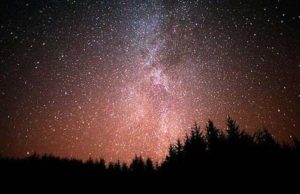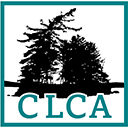 A common issue for residents on lakes is light pollution. One of the real joys of living on an Adirondack Lake is to sit on a dock or be out on a boat at night and enjoy the dense canopy of stars above. This experience can be seriously marred by the light of surrounding camps with flood lights. This is a concern all residents should pay attention to.
A common issue for residents on lakes is light pollution. One of the real joys of living on an Adirondack Lake is to sit on a dock or be out on a boat at night and enjoy the dense canopy of stars above. This experience can be seriously marred by the light of surrounding camps with flood lights. This is a concern all residents should pay attention to.
For more information read the webpage of the International Dark Sky Association.
Here are links to companies that sell products designed to control light pollution:
Dorothy (Osborn) Taylor wrote the following essay entitled “Confessions of a Former ‘Lightaholic’”:
Astronomers call the Adirondack region’s night sky a “dark puddle,” – highly desirable for stargazing, with the Milky Way easily visible. But our puddle is becoming lighter, affected by light pollution from places as far away as Montreal and as nearby as our neighbor’s dock light. And the effects of light pollution go beyond astronomical inconvenience.
A couple of summers ago, my good friend – Canada Lake neighbor, Alan Fiedler – tactfully suggested that the flood lights illuminating my dock and the path to my camp were excessive.
“But Alan, I need to find my dock coming across the lake at night. I like the light,” I responded.
Persistent in his cause, Alan encouraged me to try a simple change to a lower-wattage bulb. He had also run a blurb in The Echo about light pollution, offering to provide and install special reflectors for flood lights to direct the light where it’s needed – at the ground.
Curious, I did some research on light pollution. “Our Vanishing Night,” a November 2008 National Geographic article, is worth reading, and the International Dark-Sky Association (www.darksky.org) provides plenty of information and resources.
Research suggests that light at night interferes with nocturnal cycles of all creatures, affecting migrating birds, fish, frogs, salamanders, lightning bugs and even humans (Canada-Lakers included!). Excessive light is confusing the sea turtles…They hatch and instead of heading toward the moonlit sea, some are trying to reach the Walmart parking lot. You get the idea.
We need our darkness. Light at night changes our normal circadian rhythms and may affect hormone production, cell function, brain activity and immune system function. At least one study suggests a direct correlation between higher rates of breast cancer in women and the nighttime brightness of their neighborhoods.
And then there’s the sheer waste. In the United States, an estimated $1.7 billion goes directly into the nighttime sky via unshielded outdoor lighting, resulting in 1.2 million tons of carbon dioxide released into the atmosphere.
On a local level, the Adirondack Park Agency considers exterior lighting plans before approving building permits. Requirements include motion detectors and full cut-off outdoor fixtures that direct light downward.
Last summer, I decided to replace my flood lights with yellow 40-watt “bug” light bulbs. “Just an experiment, Alan,” I said. “Don‘t get too excited.” But the results WERE exciting – surprisingly subtle, yet provocative. The amber glow from my low-wattage bulbs provided better visibility than the flood lights and were a lot easier on the eye.
Helping to decrease light pollution is as easy as changing a light bulb, installing a reflector, or bringing a flashlight when one goes out for the evening. It’s a good thing to do.
Here’s to summer! See you under the stars…
Alan Fiedler has summarized the solutions to light pollution:
The key is lower wattage, use a shield, and use it sparingly. And most simple and least impactful of all, use a flashlight!
Thanks to Alan Fiedler for submitting material for this page.

